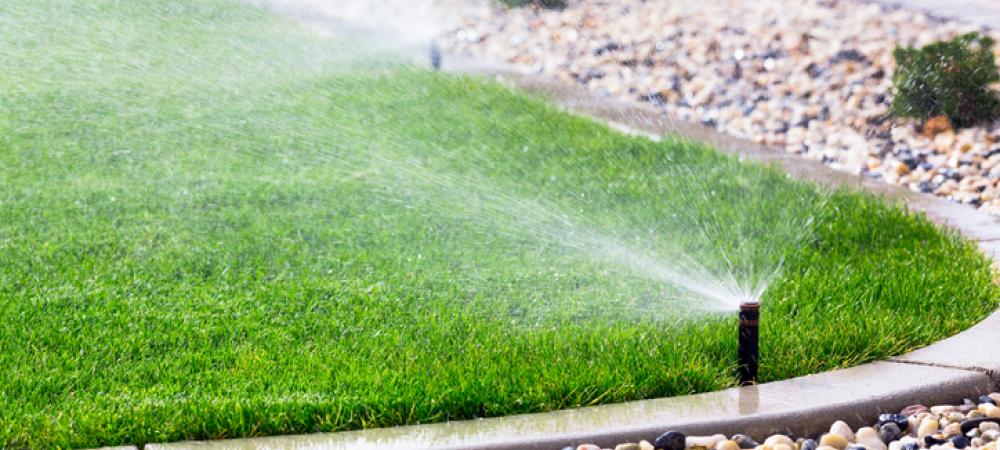Seasonal Lawn Watering Guide in the South

A well-hydrated lawn is essential for maintaining a beautiful landscape, especially in the South, where hot summers and varying seasonal rainfall can make lawn care challenging. Without proper watering, grass can become dry, patchy, and more susceptible to pests and diseases. This guide will help you determine the best lawn watering practices for each season, ensuring your grass stays healthy year-round.
How Many Minutes Should I Water My Lawn?
The amount of time you should water depends on factors such as grass type, soil composition, and weather conditions. A general rule of thumb is:
- Sandy soil: 30–40 minutes per watering session
- Loamy soil: 20–30 minutes per session
- Clay soil: 15–25 minutes per session (to avoid runoff)
Sandy soil drains quickly, requiring longer watering times, while clay soil retains moisture longer and can lead to pooling if overwatered. Loamy soil, which is a balanced mix of sand and clay, provides the best water retention for most lawns.
To determine the exact time for your lawn, place a rain gauge or empty tuna cans in your yard and measure how long it takes to collect about 1 inch of water per week (or 1.5 inches in extreme heat). If your lawn shows signs of stress—like grass blades folding or a bluish-gray tint—it's a sign you may need to increase watering duration.
What Is the Best Lawn Watering Schedule?
The ideal watering schedule depends on the season and local climate conditions:
- Spring: 2–3 times per week, early morning, as temperatures begin to rise
- Summer: 3–4 times per week, early morning, to compensate for higher evaporation rates
- Fall: 1–2 times per week, depending on rainfall, as temperatures cool down
- Winter: Water only if there is a drought period, since most grasses enter dormancy
Watering in the early morning (before 10 AM) allows moisture to soak in before the sun evaporates it. Watering later in the day, especially in the evening, can leave grass wet overnight, creating an environment for mold and fungal diseases. If possible, avoid watering during windy conditions, as this can lead to uneven distribution and wasted water.
Understanding the 1/2/3/2:1 Lawn Watering Technique
This method helps balance deep root growth and prevents overwatering while mimicking natural rainfall patterns:
- Water deeply on Day 1 – A thorough soaking to encourage deep root growth.
- Half the amount on Day 2 – A lighter watering to maintain soil moisture.
- Skip Day 3 – Allows roots to search deeper for moisture.
- Full watering again on Day 4 – Another deep watering session to promote strong roots.
- Half the amount on Day 5 – A smaller watering to maintain hydration.
- Skip Days 6 and 7 – A rest period to prevent excessive moisture buildup.
This approach prevents shallow root systems from developing, which makes grass more drought-resistant over time. It is especially effective for warm-season grasses common in the South, such as Bermuda, St. Augustine, and Zoysia.
How Long Should Sprinklers Run in Each Zone?
Different sprinkler types apply water at different rates, so run times vary based on your irrigation system:
- Rotary sprinklers: 30–45 minutes per zone, as they distribute water slowly.
- Fixed spray heads: 10–20 minutes per zone, due to their higher water output.
- Drip irrigation: 45–60 minutes per zone, as it provides slow, deep watering.
Using a rain gauge or performing the "screwdriver test" (pushing a screwdriver into the soil to check moisture depth) can help you adjust watering times to avoid over- or under-watering. If runoff occurs before adequate water penetration, consider breaking up watering sessions into multiple shorter cycles to improve absorption.
Is It Better to Water Longer or More Often?
Watering longer and less frequently is better than frequent, shallow watering. Deep watering encourages strong root development, which improves drought tolerance and reduces the need for excessive watering. Ideally, aim for two to three deep watering sessions per week, allowing the top few inches of soil to dry out in between to prevent disease and weed growth.
Shallow watering results in weak, surface-level root systems that require more frequent watering and make lawns more vulnerable to drought stress. If your lawn develops dry spots, adjust watering duration rather than frequency to ensure even moisture distribution.
Additional Tips for Watering Lawns in the South
- Monitor weather patterns: Adjust watering schedules based on seasonal rainfall to avoid overwatering.
- Use a rain sensor: Prevent overwatering by integrating a sensor into your irrigation system, which will automatically pause watering during rainy conditions.
- Check for runoff: If water starts pooling or running off before being absorbed, split watering into shorter cycles to improve penetration.
- Mow at the right height: Taller grass retains moisture better, reducing evaporation. Keep St. Augustine at 3–4 inches, Bermuda at 1.5–2 inches, and Zoysia at 2–3 inches.
- Aerate your lawn: Aeration helps water reach deeper into the soil, reducing compaction and improving root growth.
By following these seasonal lawn watering practices, you can keep your lawn healthy, green, and drought-resistant year-round. Proper watering, combined with good lawn care habits, will help ensure a lush landscape even in the hottest months.
If you're interested in how Unlimited Lawn Care can help you keep your lawn looking great, then contact our team to see the kinds of lawn care services we offer to homeowners in South Carolina, Georgia, and Alabama!
